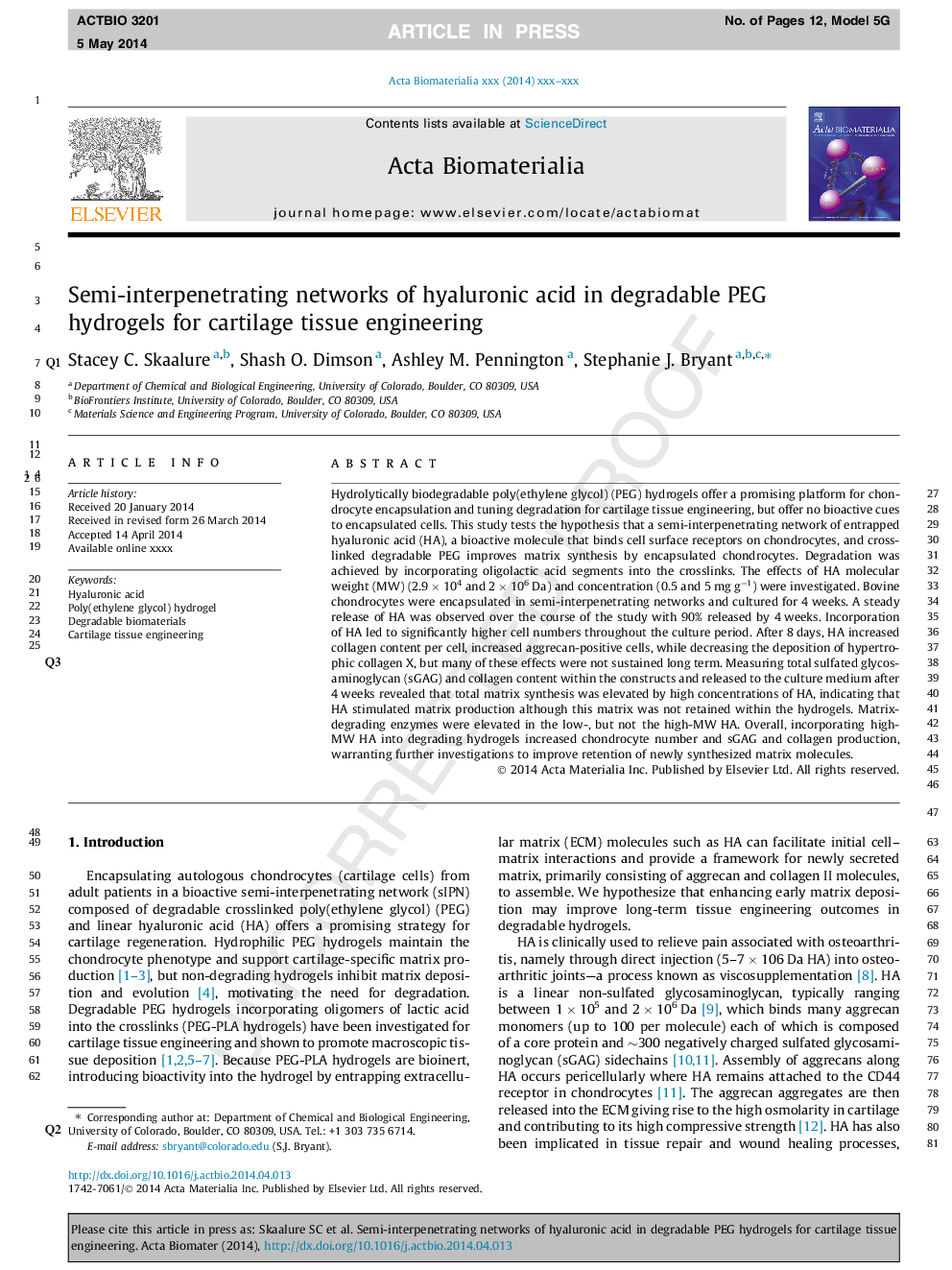| Article ID | Journal | Published Year | Pages | File Type |
|---|---|---|---|---|
| 10159130 | Acta Biomaterialia | 2014 | 12 Pages |
Abstract
Hydrolytically biodegradable poly(ethylene glycol) (PEG) hydrogels offer a promising platform for chondrocyte encapsulation and tuning degradation for cartilage tissue engineering, but offer no bioactive cues to encapsulated cells. This study tests the hypothesis that a semi-interpenetrating network of entrapped hyaluronic acid (HA), a bioactive molecule that binds cell surface receptors on chondrocytes, and crosslinked degradable PEG improves matrix synthesis by encapsulated chondrocytes. Degradation was achieved by incorporating oligo (lactic acid) segments into the crosslinks. The effects of HA molecular weight (MW) (2.9 Ã 104 and 2 Ã 106 Da) and concentration (0.5 and 5 mg gâ1) were investigated. Bovine chondrocytes were encapsulated in semi-interpenetrating networks and cultured for 4 weeks. A steady release of HA was observed over the course of the study with 90% released by 4 weeks. Incorporation of HA led to significantly higher cell numbers throughout the culture period. After 8 days, HA increased collagen content per cell, increased aggrecan-positive cells, while decreasing the deposition of hypertrophic collagen X, but these effects were not sustained long term. Measuring total sulfated glycosaminoglycan (sGAG) and collagen content within the constructs and released to the culture medium after 4 weeks revealed that total matrix synthesis was elevated by high concentrations of HA, indicating that HA stimulated matrix production although this matrix was not retained within the hydrogels. Matrix-degrading enzymes were elevated in the low-, but not the high-MW HA. Overall, incorporating high-MW HA into degrading hydrogels increased chondrocyte number and sGAG and collagen production, warranting further investigations to improve retention of newly synthesized matrix molecules.
Related Topics
Physical Sciences and Engineering
Chemical Engineering
Bioengineering
Authors
Stacey C. Skaalure, Shash O. Dimson, Ashley M. Pennington, Stephanie J. Bryant,
